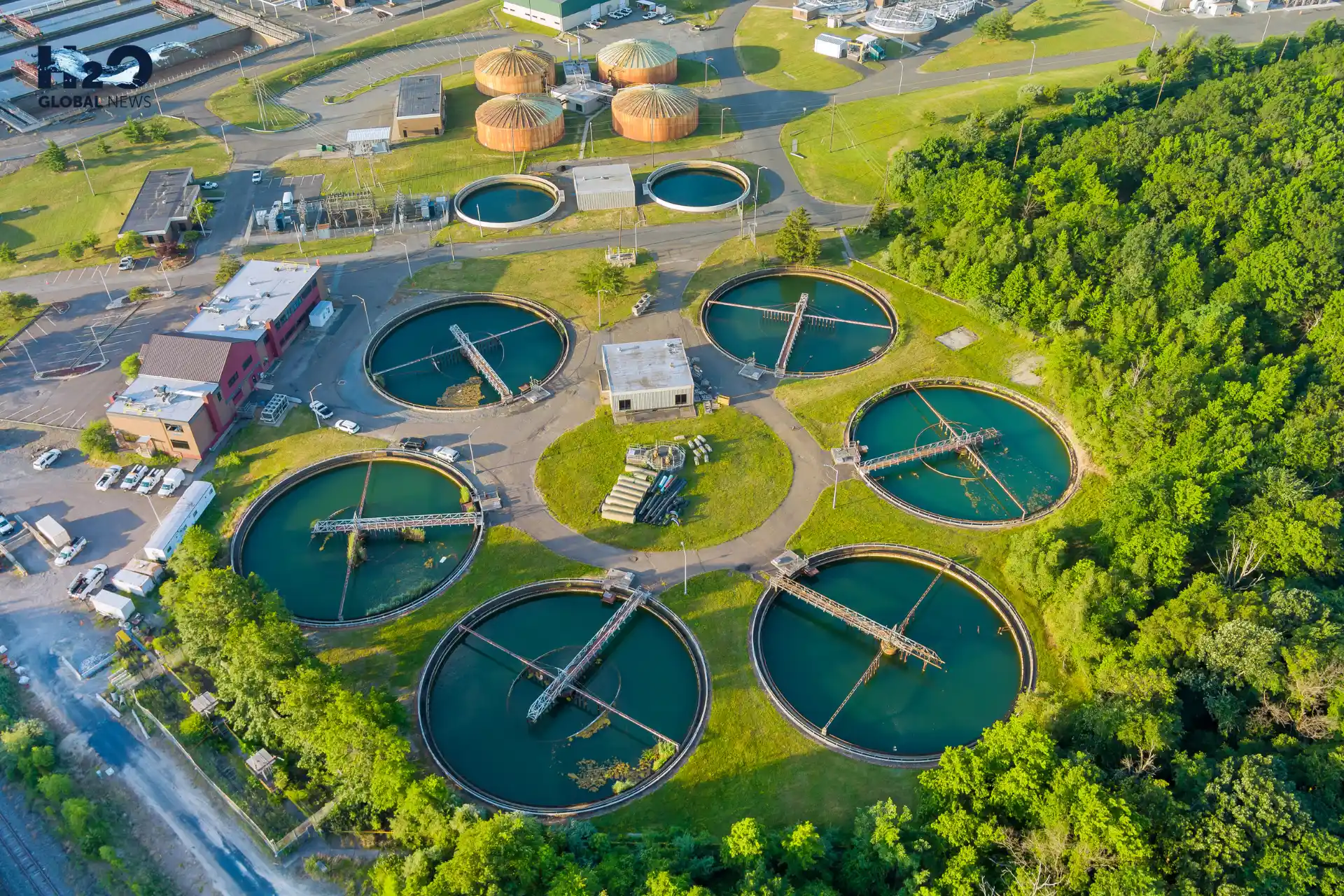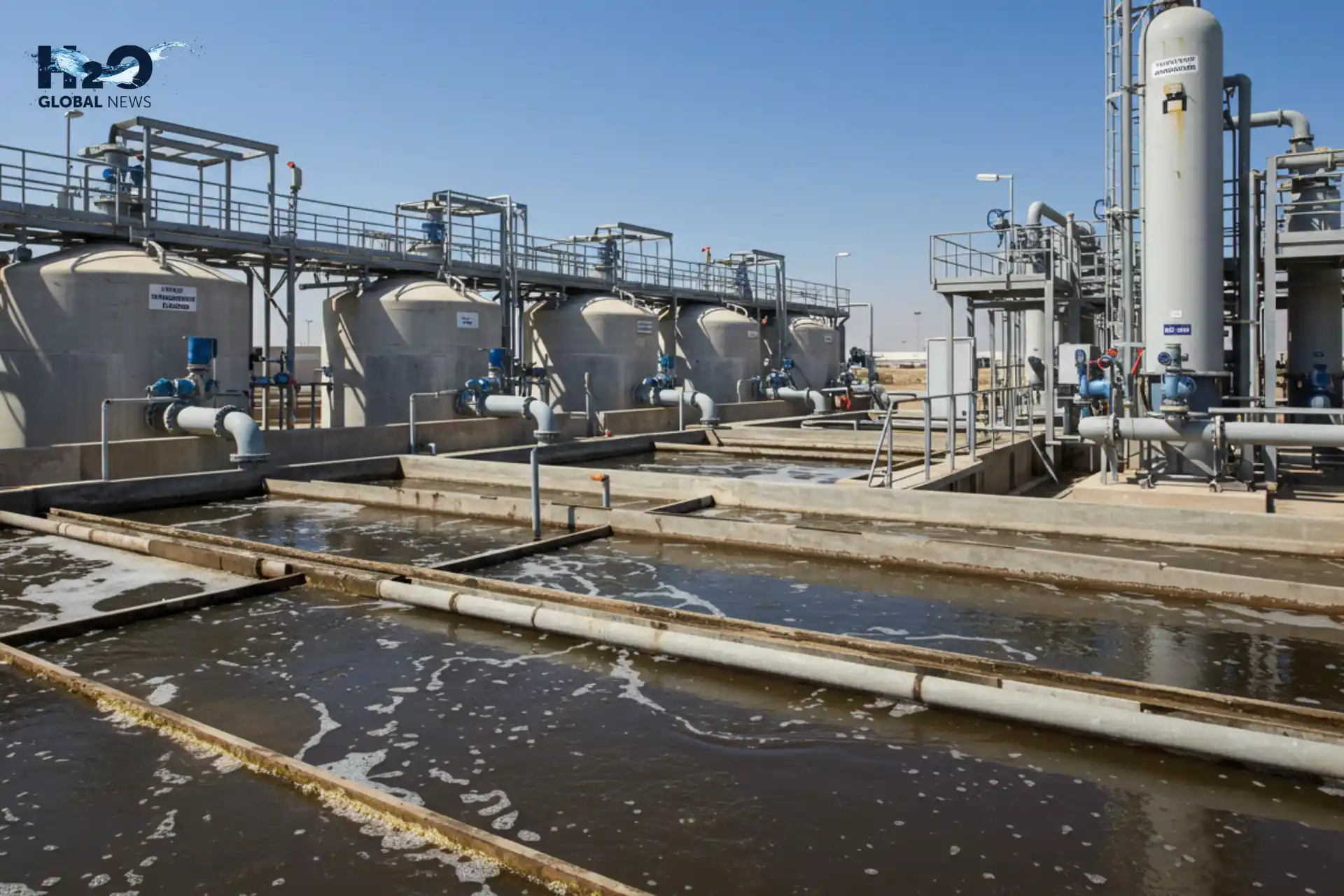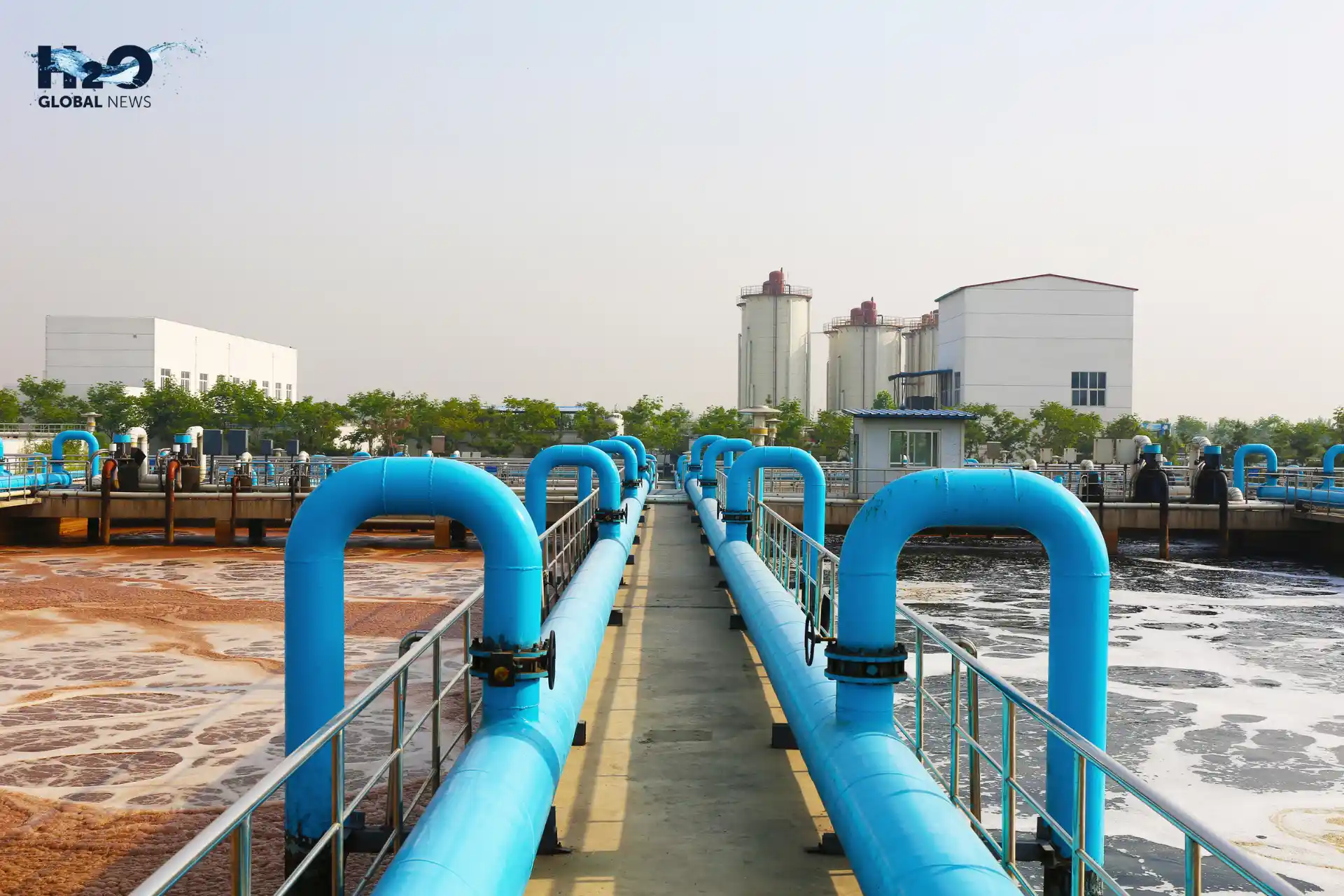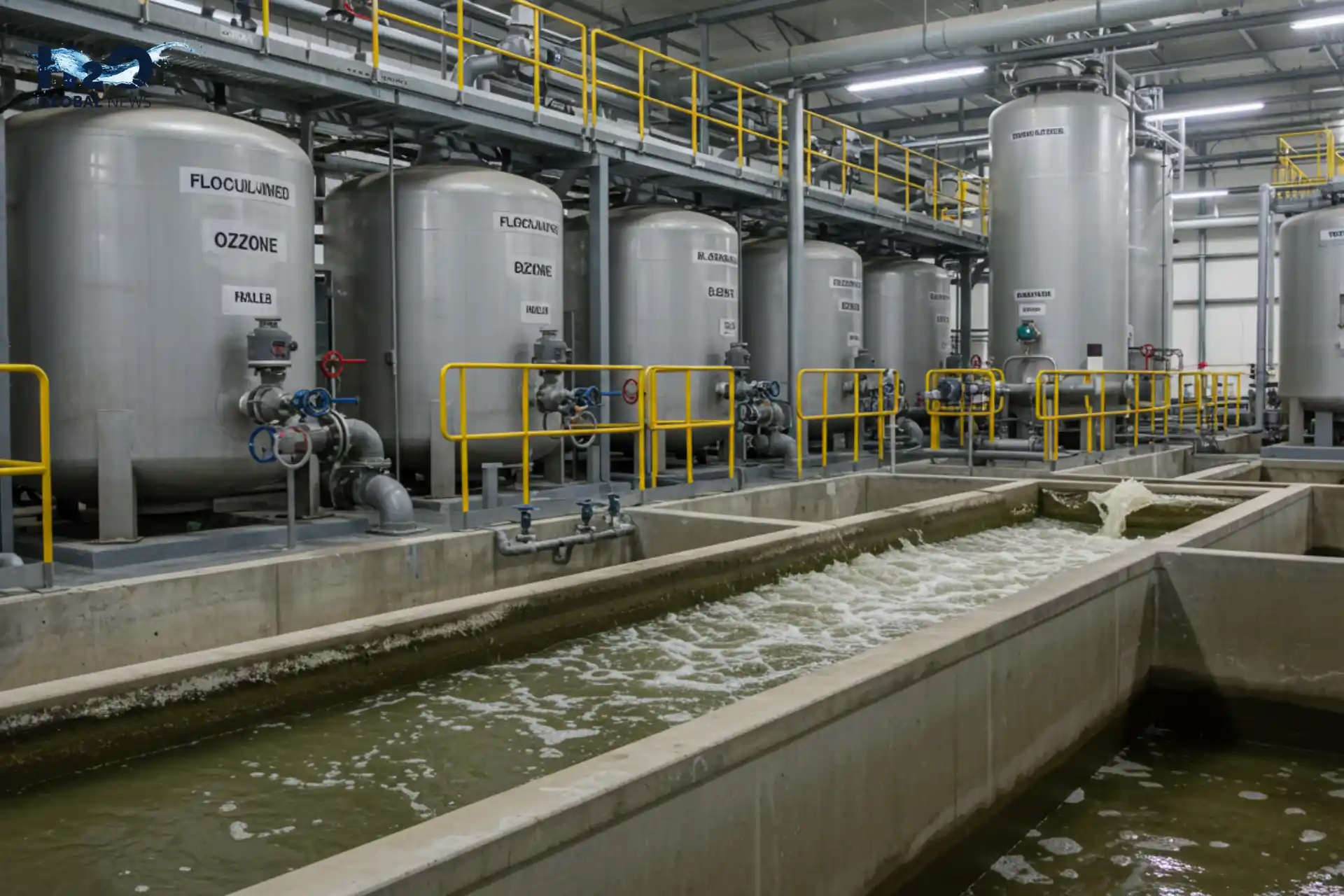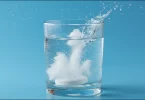Wastewater contains many harmful substances that need to be removed before the water can be safely released or reused. Two common ways to clean this dirty water are biological treatment and chemical treatment.
Biological treatment uses natural processes with helpful bacteria to break down organic waste. Chemical treatment uses special chemicals to remove pollutants that are hard to break down naturally.
Understanding the differences between biological vs chemical water treatment is important for choosing the most effective and sustainable method. So, let’s explore how these two treatment processes differ.
Biological vs Chemical Water Treatment- Key Differences
Pollutants Removed by Both Methods
Both biological and chemical wastewater treatments target different types of contaminants, depending on the treatment method used.
Biological Water Treatment
Biological water treatment relies on natural living organisms, mostly bacteria and microorganisms, to break down harmful substances in wastewater. These tiny helpers consume organic waste, turning it into harmless materials.
Common pollutants removed in the biological treatment of wastewater include:
- Edible Fats: Tiny living things called microbes can eat fats found in food. They break these fats into safe, simple parts. This helps clean the water naturally without using chemicals.
- Hydrocarbons: Some hydrocarbons (like parts of oil) can be broken down by special types of bacteria. These bacteria can break down things like edible fats and some parts of oil.
- Aromatic Compounds: These are special chemicals with ring-like shapes, such as benzene. Some of them can be broken down by certain microbes, but it usually takes longer and needs special types of microbes. The more toxic or complicated ones are harder to clean this way.
- Nitrogen and Phosphorus: Microbes can also change nitrogen and phosphorus in the water into safer forms, which helps reduce pollution.
- Suspended Solids: These are tiny bits floating in the water. Microbes help break down and remove these solid pieces.
- Pathogens: Biological treatment can reduce some harmful germs in the water, but most of the time, we still need to use chemicals to kill all the dangerous ones.
Chemical Water Treatment
Chemical water treatment uses chemicals to remove pollutants. This method often works faster and is effective against substances that biological treatment cannot easily handle.
Common pollutants removed through chemical treatment of wastewater are:
- Heavy Metals Residues: Metals like lead and mercury can’t be broken down by microbes. So, we use chemicals to make them stick together and settle out of the water. This is the main way to remove metal residues. Want to see how this works with lead? Take a look at our article on how to remove lead from water.
- Paints and Solvents: These contain strong chemicals that are hard for microbes to break down. Chemical treatment is used to break them apart or remove them from the water.
- Color and Odor-causing Chemicals: Some substances in water cause bad smells or colors. Chemicals can be added to remove these and make the water clearer and fresher.
- Pathogens: To kill harmful germs like bacteria and viruses, strong chemicals like chlorine or ozone are used. These disinfectants are very effective.
Treatment Process: Biological vs. Chemical
The way biological and chemical treatments clean wastewater is completely different. One uses helpful bacteria, while the other uses chemicals; both follow their own steps to remove harmful substances from the water.
Biological Water Treatment Process
It is like natural processes, but in controlled environments within water treatment systems. Biological treatment processes are capable of removing over 90% of organic pollutants. The treatment steps usually include:
- Pre-Treatment: In this step, large materials that can’t be broken down by bacteria are removed. Screens, filters, and chambers are used to catch plastic, paper, leaves, and trash. This step protects the rest of the system from getting clogged or damaged.
- Anaerobic Treatment: Next, the wastewater goes into special containers where there is no oxygen. Here, bacteria that don’t need air start breaking down organic waste like food particles, fats, and sludge. Anaerobic treatment is suitable for thick, heavy waste and reduces the total amount of solid waste.
- Aerobic Treatment: In this, the water goes into tanks that are filled with air using blowers. This helps bacteria that need oxygen grow and stay active. These helpful bacteria eat the remaining organic matter, like sewage, soap, or leftover food, and turn it into cleaner water, carbon dioxide, and harmless byproducts.
- Disinfection: After the water is cleaned by bacteria, some harmful germs may still be left. To make the water safe, a disinfection step is used. This can be done by adding chlorine, ozone, or using UV light. This step is important if the treated water is going to rivers, lakes, or is being reused for irrigation or industrial purposes.
Chemical Water Treatment Process
This method uses chemicals to remove harmful substances from dirty water. It’s often used in industrial water treatment systems where pollutants like heavy metals, toxic chemicals, paints, solvents, and dyes are present.
- Coagulation: In this step, chemicals like alum or ferric chloride are added to the wastewater. These chemicals help tiny particles, like dirt, oils, and chemical pollutants, lose their electrical charge. Once that happens, they start to clump together into small lumps called “flocs.”
- Flocculation: After coagulation, the water is gently stirred so that the small flocs can bump into each other and form larger, heavier flocs. This step makes it easier for the particles to settle at the bottom or be filtered out. It helps improve the clarity of the water and reduces the number of harmful particles left behind.
- Ion Exchange: This step is used when the water contains dissolved chemicals, like calcium, magnesium, lead, mercury, or other metal residues. In ion exchange, the water passes through a special resin that swaps out the bad ions with harmless ones, usually sodium or hydrogen.
- Disinfection: Even after removing particles and chemicals, the water may still contain bacteria, viruses, and other germs. Disinfection is the final step, where chemicals like chlorine, ozone, or hydrogen peroxide are added, or UV light is used to kill these harmful organisms.
Advanced chemical methods, such as Advanced Oxidation Processes, are sometimes used in chemical water purification to break down stubborn pollutants that are hard to remove with traditional methods.
Cost Differences in Chemical and Biological Water Treatment
The cost of treating wastewater depends on many things, like the type of pollutants, the size of the facility, and the method used. Chemical treatment often has higher ongoing costs because you need to keep buying chemical reactants.
On the other hand, biological treatment usually has higher installation costs because it needs big tanks, aeration systems, and special equipment to support bacteria that break down waste.
Both systems also require energy to run, trained workers, and regular maintenance.
Energy use is another big factor. In the United States, wastewater treatment plants spend approximately $2 billion per year on electricity.
For example, biological systems may use more electricity for aeration, while chemical systems spend more on buying and storing chemicals. So, depending on the location and setup, one method might be cheaper or more efficient than the other.
Which is the Best Water Treatment System for Your Facility?
Deciding which wastewater treatment method purifies water best depends largely on the type of pollutants and the treatment goals.
Both methods treat different pollutants. First, you need to consider the type of pollutants in your wastewater. If the water has a lot of organic waste, like food scraps or human waste, a biological treatment system that uses microorganisms is usually the best choice because it breaks down these materials naturally.
However, if your wastewater contains chemical pollutants such as heavy metals, paints, solvents, or other toxic substances, then the chemical treatment method will be more effective. It can quickly remove these harmful substances.
Biological systems often require more space and have higher energy needs, but are cost-effective over time. Chemical systems take up less space and treat certain contaminants faster, but can be more expensive to operate.
As water needs evolve and pollution sources change, facilities are beginning to explore more sustainable and tech-driven treatment methods. Discover some innovative technologies paving the way for future wastewater treatment.
FAQs
1- Which method is more cost-effective?
Biological treatment usually has higher initial setup costs but lower operating costs because it relies on natural processes. Chemical treatment can have lower installation costs but higher ongoing expenses due to chemical purchases.
2- Is chemical treatment faster than biological treatment?
Yes, chemical treatment often works faster because it uses chemicals to quickly remove contaminants, whereas biological treatment depends on slower natural microbial processes.
3- Can both methods be used together?
Yes. Combining biological and chemical treatments is common to achieve thorough purification, targeting a wider range of pollutants for safer water reuse or release.
4- How does wastewater recycling relate to biological and chemical treatment?
Wastewater recycling involves treating wastewater so it can be safely reused. Both biological and chemical wastewater treatments play important roles in this process by removing pollutants and making the water clean enough for reuse in irrigation, industry, or even drinking after further purification.
Conclusion
Both biological and chemical wastewater treatment methods play an important role in keeping our water clean and safe. Understanding the specific needs and characteristics of the wastewater is essential for selecting the most appropriate treatment. As water scarcity increases, using sustainable water treatment systems and advanced water treatment technologies will be important to ensuring clean water for future generations.





